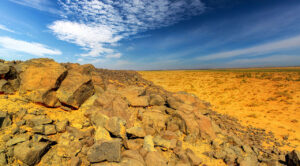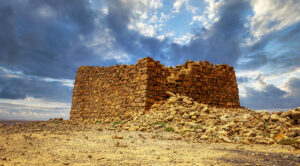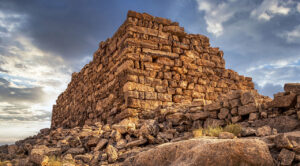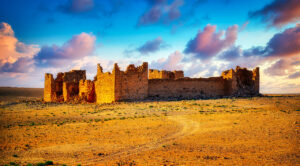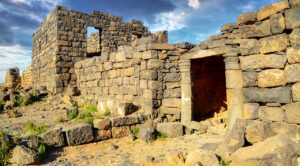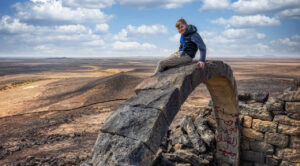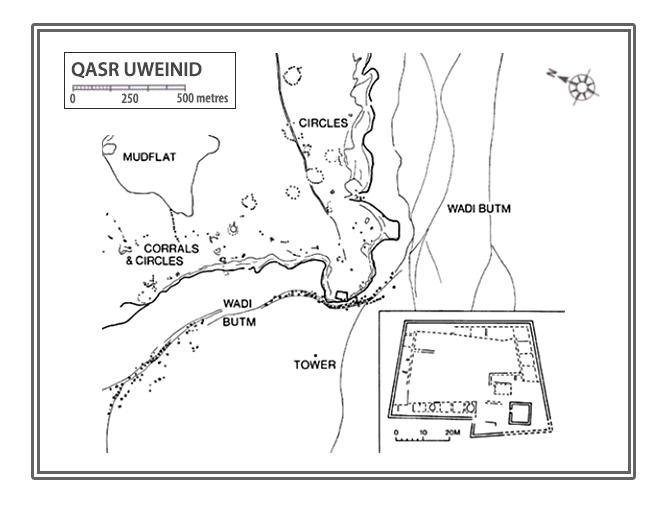Perched dramatically on the tip of a low basalt spur, the Roman Fort of Uweinid offers a glimpse into antiquity, standing 15 km southwest of Qasr Azraq and overlooking the meandering Wadi Butm. The strategic location of this 3rd-century AD military outpost, surrounded by natural defences on its northern and western flanks, highlights its historical importance in guarding the vital source of Wadi as-Sirhan, now situated in Saudi Arabia. Although Uweinid was abandoned less than a century after its construction, it remains one of the region’s oldest surviving fortifications, silently recounting tales of Roman military might.
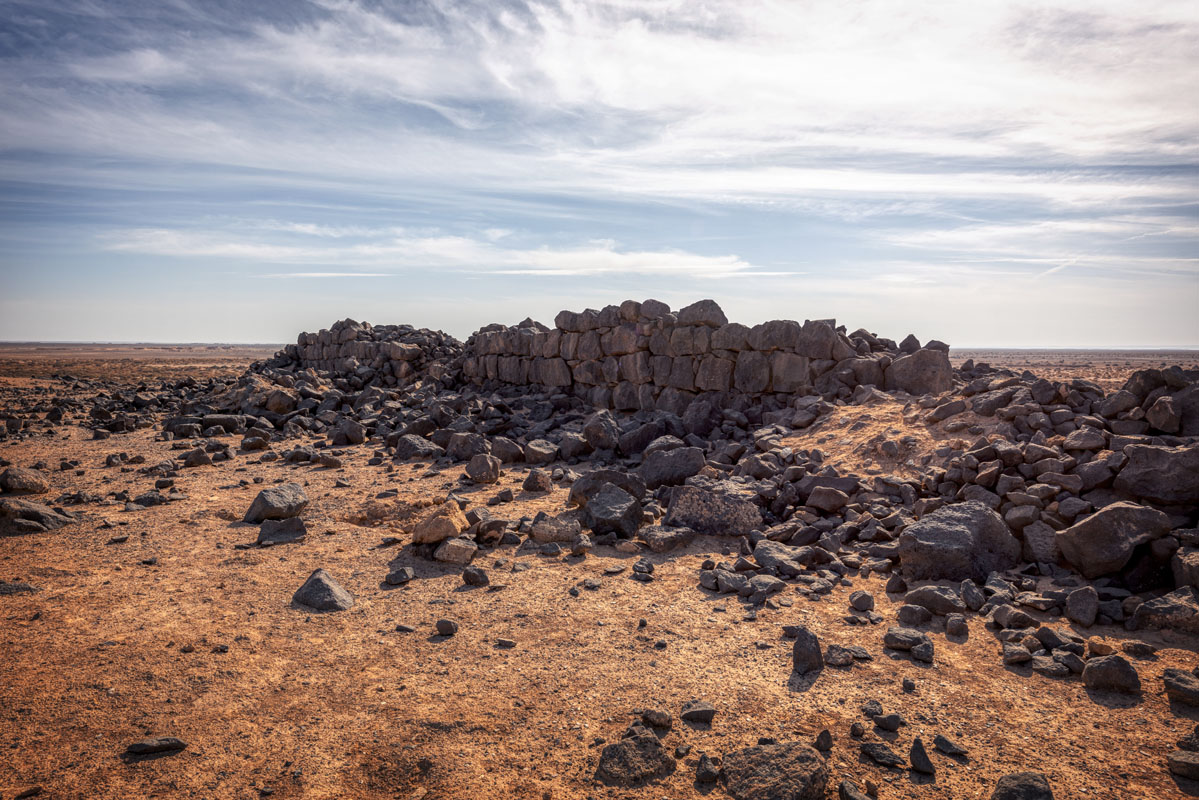
Architectural Features & Historical Significance
Uweinid’s irregular layout reflects a well-considered design adapted to the terrain. Its southwest corner features a robust tower, and the west wall holds a small, angled entrance flanked by a fascinating inscribed lintel. This inscription pays tribute to Septimius Severus, a Roman emperor, and L. Marius Perpetuus, the Governor of Arabia from 200 to 202 AD. It further indicates a Roman presence in Azraq during this period, though concrete evidence beyond this inscription remains elusive.
The lintel inscription bears testament to the chaotic political machinations of the Roman Empire. The deliberate erasure of the fourth, fifth, and sixth lines points to an attempt to erase the memory of Emperor Geta, whose assassination by his brother Caracalla in 212 AD remains one of Rome’s most infamous fratricidal events. Another now-lost inscription once mentioned the construction of baths for the Third Cyrenaica Legion—a poignant reminder of the Roman military’s reach and organisation.
Connections and Dependencies
This diminutive fort was not a standalone structure—it was part of a broader network of defences. Alongside the small fort of Usaykhim to the northeast, Uweinid relied on the prominent Qasr Azraq, a much larger fort located nearby at the heart of the Azraq oasis. The interconnectedness of these forts not only speaks to their defensive collaboration but also to the logistical complexities of operating in these remote regions. The bustling Qasr Azraq likely provided the supplies, manpower, and strategic oversight necessary for Uweinid’s survival.
Life Beyond the Romans
Though abandoned in the 4th century, Uweinid continued to shape the region’s history. Notably, the fort is mentioned by the 10th-century geographer al-Maqdisi and served later as a caravan stop during early Arab times. Travellers moving between Arabia and Amman might have found respite within its walls, where echoes of Roman engineering mixed with the rhythms of early Arab trade.
A Timeless Relic
Today, the fort of Uweinid stands as a steadfast reminder of the Roman Empire’s extensive reach and enduring legacy in the Middle East. Its tower, walls, and inscriptions offer tantalising clues to life on the fringes of the empire, inviting visitors to imagine a time when distant outposts like Uweinid played a crucial role in securing Rome’s far-flung borders. Whether you’re a history enthusiast or simply curious about ancient civilisations, this quiet sentinel of basalt and time is sure to leave a lasting impression.

The forts in this category are modest in size, best described as fortlets, but each holds a unique historical significance. Designed with practicality in mind, these forts featured a central courtyard, surrounded by rooms nestled seamlessly along the interior of the outer walls. This architectural approach lent a measure of uniformity to their overall design. However, all of these structures were modest, with none exceeding a single storey, save for the tower at the fort of Qasr Uweinid.
Qasr Uweinid, a fascinating example of these fortlets, stands apart for its historical intrigue. Located in the arid expanse of the ancient Near East, this fort occupies a mere 0.25 hectares (0.6 acres)—an area scarcely one-sixth the size expected for a fully functioning Early Empire infantry auxiliary regiment. The diminutive size hints at its specific purpose, likely tailored to localised defence rather than hosting a large military presence.
Dating back to the Roman period, Qasr Uweinid holds echoes of a time when the empire extended its reach into the desert frontiers, fortifying vital trade routes and asserting control over remote regions. The tower, rising above the otherwise low-lying structure, may have served as both a lookout and a symbol of imperial presence, standing defiantly against the encroaching wilderness.
